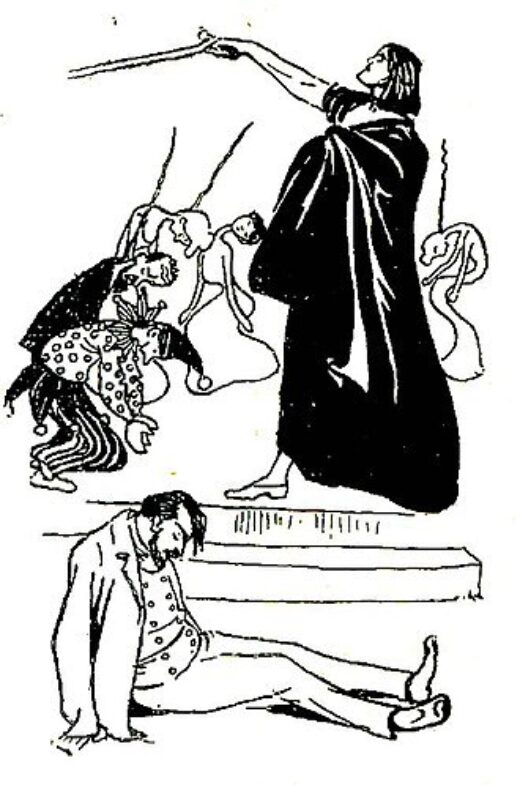
Printed
24 pages
Author(s)
Zum großen Wurstel
Burleske in einem Akt
The sign that gives the play its name, Zum großen Wurstel, refers to the nickname Wurstelprater (from Wurstel, short for Hanswurst) given to the puppet theatres established in the alleys of the Prater, Vienna's entertainment park. Schnitzler only chose this title in 1904, when he decided to include the play in a cycle of three plays entitled Marionetten: this was actually the first title given to the play in its first version in 1899, and the title under which it was performed on the stage of the Berlin literary cabaret Überbrettl in 1901. In the same year, Schnitzler wrote a letter to the critic Hermann Bahr (1863-1934) about the satirical purpose of the play, which is based on a parallelism between humans and puppets: when the play was first performed in Berlin and later in Vienna, the play within the play was performed by actors dressed as puppets. Schnitzler borrows two of his characters from the works of his friends Bahr (Der Meister) and Richard Beer-Hofmann (Der Graf von Charolais).
Audience and puppets mingle
The Viennese public attends a puppet show in the Prater. The play in question features a hero who is unwillingly involved in a foursome with his lover Liesl and the Duke and Duchess of Lawin. The duel between him and the Duke is cancelled, but he loses the interest of the Duchess and the love of Liesl in the process. Death comes. The audience, which has not stopped commenting on the play, intervenes more and more loudly and the performance turns into a scandal. It is no longer clear who is a spectator, who is a puppet, until a man in a blue coat enters the stage... and cuts the strings of the puppets with a sword, thus discriminating between animate and inanimate.
Other titles
First performance
Publications and translations
Arthur Schnitzler: Zum großen Wurstel. Burleske in einem Akt. Die Zeit, Nr. 926, 1905.
Arthur Schnitzler: Die dramatischen Werke. Frankfurt am Main, S. Fischer, 1962.
Arthur Schnitzler: Marionnettes - Trois pièces en un acte (Le Marionnettiste ; Cassian le Téméraire ; Au Grand Guignol). Paris, Actes Sud, 1992.
(French)
